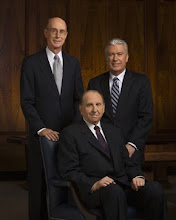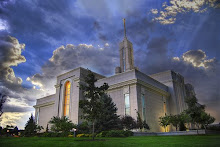My mind reverted back to the Atonement and I wondered what Christ felt as my image or my name passed through his mind. I remembered these words from the song, "This is the Christ"
 :
:I read his words, the words he prayed while bearing sorrow in Gethsemane. I feel his love, the price he paid. How many drops of blood were spilled for me? With saints of old in joyful cry, I, too, can testify, “This is the Christ!”
Then I wrote the word "Easter" on my page and wondered where the name came from. I understood the significance of Good Friday and Easter Sunday, but I had no idea where the name "Easter" came from. So I googled it and got this response (ironically from ChaCha.com):
The name "easter" comes from the ancient German goddess Ostara "The Teutonic Goddess of Spring" (called Eostre in Anglo-Saxon).
After more online research, this answer was confirmed. So there it is. The day of Christ's resurrect
 ion got it's name from a German goddess and the world has turned the day into a celebration of the death of winter and the beginning of spring and summer. We know better. We know that we are not celebrating the death of anything. Yes, we are grateful and ever indebted to the Messiah for "suffering pains and afflictions and temptations of every kind" ( Alma 7:11) and we know that "he was wounded for our transgressions, he was bruised for our iniquities: the chastisement of our peace was upon him; and with his stripes we are healed." (Isa. 53:5) But we do not celebrate the Saviors death. We celebrate the Saviors life and ressurrection. That is why we don't have the cross as a religious symbol.
ion got it's name from a German goddess and the world has turned the day into a celebration of the death of winter and the beginning of spring and summer. We know better. We know that we are not celebrating the death of anything. Yes, we are grateful and ever indebted to the Messiah for "suffering pains and afflictions and temptations of every kind" ( Alma 7:11) and we know that "he was wounded for our transgressions, he was bruised for our iniquities: the chastisement of our peace was upon him; and with his stripes we are healed." (Isa. 53:5) But we do not celebrate the Saviors death. We celebrate the Saviors life and ressurrection. That is why we don't have the cross as a religious symbol.  We celebrate the emtpy tomb because it means that "He is not here, but is risen!" (Luke 24:3-6). Christ triumphed over death making it possible for us to do the same. Our atoning brother bridged the gap between life and death and gives all the free gift of immortality and offers eternal life as a conditional gift. What a glorious and exciting week! I would encourage everyone to take some time and remember what happend on this weekend 1,976 years ago. I love the testimony of Joseph Smith and Sidney Rigdon:
We celebrate the emtpy tomb because it means that "He is not here, but is risen!" (Luke 24:3-6). Christ triumphed over death making it possible for us to do the same. Our atoning brother bridged the gap between life and death and gives all the free gift of immortality and offers eternal life as a conditional gift. What a glorious and exciting week! I would encourage everyone to take some time and remember what happend on this weekend 1,976 years ago. I love the testimony of Joseph Smith and Sidney Rigdon:“And now, after the many testimonies which have been given of 
Ezra Taft Benson gave said:
As one of His latter-day witnesses, I testify that He lives today. He is a resurrected Being. He is our Savior, our Lord, the very Son of God. I testify that He will come again as our glorified, resurrected Lord. That day is not far distant. To all who accept Him as Savior and Lord, His literal resurrection means that life does not end at death, for He promised: “Because I live, ye shall live also.” (John 14:19)
Christ lives again. That is what we celebrate. That is what Easter is all about.





















This is a great post!
ReplyDeleteWhat a wonderful post! It is absolutely wonderful to think of the meaning of the empty tomb that morning. One year when I was teaching Primary, Jana Fife (I think it was her,) gave each of the kids an Easter egg... but it was empty. She told them it was empty because she wanted them to remember the tomb was empty and because of that, we'll all live again. I loved it.
ReplyDeleteHoney you are such a good writer! That was really inspiring to read and it makes me appreciate Jesus Christ and this Easter celebration even more. Love you so much xoxo love-katie
ReplyDeleteWonderful post. It's nice to know that the true meaning is lost amidst pastel colored Easter candy.
ReplyDeleteOh, and of course I remember you Jake. Those are fond, although embarrassing, memories, and no, I do not remember you as a loser.
Thanks for visiting my humble blog. I appreciate the accolades very much, and because you were so nice, I suppose you can indeed stalk my blog.
That is, of course, predicated on you allowing me to do the same...